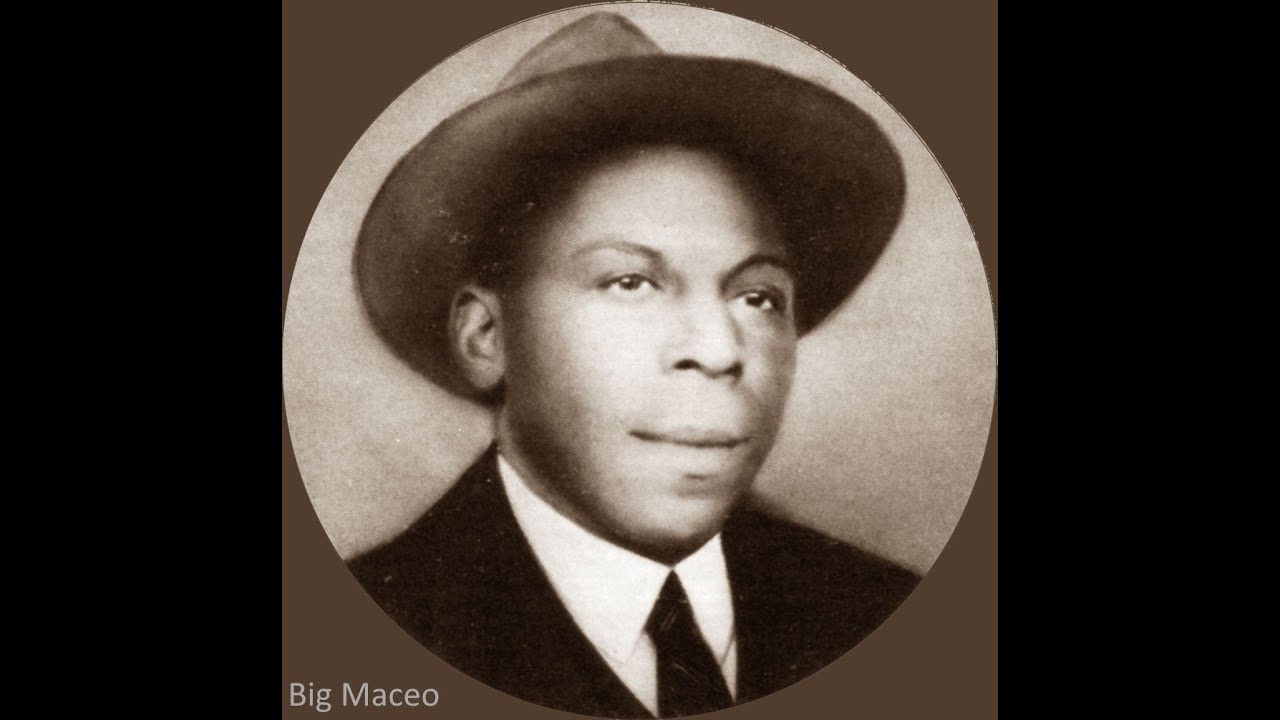Big Maceo Biography
Introduction
Major “Big Maceo” Merriweather (March 31, 1905 – February 23, 1953) was a pivotal figure in the development of blues piano during the 1940s. Known for his powerful left-hand bass lines, expressive vocals, and emotionally resonant songwriting, he helped define the Chicago blues piano style. His recordings, especially “Worried Life Blues,” became standards that influenced generations of blues musicians and pianists. Though his career was relatively short due to health issues, his legacy remains deeply embedded in the fabric of American blues.

Childhood
Big Maceo was born Major Merriweather on March 31, 1905, near Newnan, Georgia. He grew up in a rural environment, where he developed an early interest in music. His family moved to Atlanta when he was a teenager, and it was there that he first came into contact with the piano. Maceo taught himself to play, developing a natural ability and a strong left hand that would later define his style. He was drawn to the blues from an early age, influenced by the sounds he heard in local churches, traveling shows, and early blues recordings.
Youth
In the early 1920s, Maceo relocated with his family to Detroit, Michigan, where he began to take music more seriously. Detroit’s vibrant African American community gave him a space to perform at house parties and rent gatherings, commonly known as “rent parties.” He became known for his dynamic playing style, which blended the rolling rhythms of boogie-woogie with the heartfelt vocal expressions of the blues. During this period, he was influenced by blues pianists such as Leroy Carr and Roosevelt Sykes, as well as boogie-woogie innovators like Meade Lux Lewis.
Adulthood
By 1941, Maceo had moved to Chicago, the center of the postwar blues explosion. There he met Tampa Red, a well-known slide guitarist who helped him secure a recording contract. That same year, he recorded his first and most famous song, “Worried Life Blues,” which became an instant hit and one of the most enduring blues standards of all time.
From 1941 to 1945, Maceo recorded a number of influential tracks, including “County Jail Blues,” “Chicago Breakdown,” “Detroit Jump,” and “Texas Stomp.” His music was marked by a deep emotional core and a thunderous, driving piano style. He was frequently backed by Tampa Red and occasionally collaborated with other blues greats of the era.
Maceo’s work stood out for its combination of technical power and heartfelt expression. His vocals were raw and full of pathos, while his piano playing anchored the rhythm with unmatched force and swing. He became a central figure in the Chicago blues scene, influencing both his peers and younger musicians.
Major Compositions
Among Big Maceo’s most important compositions are:
- “Worried Life Blues”: His most famous song, it quickly became a blues classic and has been recorded by dozens of artists. The lyrics speak of emotional pain and lost love, themes that resonated deeply with listeners.
- “Chicago Breakdown”: An instrumental tour de force that showcased Maceo’s energetic boogie-woogie technique and rhythmic command.
- “County Jail Blues”: A song that reflected the harsh realities of life and incarceration, delivered with power and sincerity.
- “Detroit Jump” and “Texas Stomp”: Upbeat and rhythmic pieces that highlighted his ability to energize a crowd.
- “Tuff Luck Blues”: A slower, more melancholic tune that allowed Maceo to showcase his emotional range.
These compositions helped set the standard for blues piano and remain influential to this day.
Death
In the summer of 1946, Maceo suffered a major stroke that left the right side of his body paralyzed. Though he could no longer play piano with both hands, he continued to perform and record, often using his left hand for the bass parts while other pianists played the right-hand melodies. Despite these efforts, his health continued to decline.
He retired from music in 1949 after suffering another stroke. On February 23, 1953, Big Maceo Merriweather died of a heart attack in Chicago at the age of 47. He was buried in Detroit, a city that had played a key role in his musical development.
Conclusion
Big Maceo Merriweather’s contributions to blues piano are immeasurable. In a career that lasted barely a decade, he created some of the most enduring music of the genre. His forceful playing, emotionally rich singing, and timeless compositions left an indelible mark on blues history. Artists who followed in his footsteps—from Otis Spann to Henry Gray—have cited him as a major influence. Though his life was cut short, his legacy lives on in the heart of American music.

Comments are closed